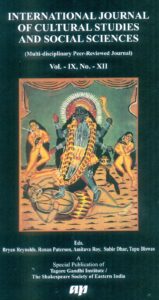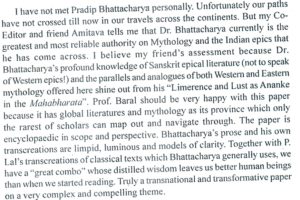Indologica Taurinensia 43 (2017)
PRADIP BHATTACHARYA, trans. from Sanskrit, The Mahabharata of Vyasa: The Complete Shantiparva Part 2: Mokshadharma, Writers Workshop, Kolkata, 2016, pp. 1107, Rs. 2000/-
The book reviewed here is Pradip Bhattacharya’s translation of Mokṣadharmaparvan in the Śānti-Parvan of Mahābhārata, which starts from Section 174 of the Śānti-Parvan in Kisari Mohan Ganguli’s (KMG) prose translation, and corresponds to Section 168 of the Bhandarkar Oriental Research Institute (BORI) or Pune Critical Edition (C.E).
Padma Shri Professor Purushottam Lal, D. Litt. began the first ever attempt to a verse “transcreation” of the Mahabharata in 1968; unfortunately, his timeless ongoing work lost to time in 2010 with his untimely demise, so that “transcreation” of sixteen and a half of the epic’s eighteen books could be published. Bhattacharya takes up the unfinished job of his Guru, and offers this verse-prose Guru–Dakṣiṇā to his “much-admired guru and beloved acharya”, Prof. Lal. He however, is on his own in that he does “translate rather than transcreate”.
Bhattacharya proposes to “keeping to the original syntax as far as possible without making the reading too awkward” and sets out on his translation venture “in free verse (alternate lines of ten and four-to-six feet) and in prose (as in original) faithful to Prof. Lal’s objective of providing the full ‘ragbag’ version.”
Mokṣadharmaparvan being the philosophic and soteriological culmination of Mahābhārata and Ancient India’s message and wisdom, Bhattacharya’s work is culturally important in bringing to the English speaking world this very important parvan.
The idea of Mokṣa that Kṛṣṇa teaches Arjuna in the Gītā (Udyoga Parvan) and found elsewhere (though mostly in the sense of liberty from any Tyrannous Power) is elaborated in Mokṣadharmaparvan through Itihāsa-Puraṇa, narratives, recollections and fables. Mokṣa is the final of the Four Puruṣārthas – following Dharma, Artha and Kāma; yet it would not arrive automatically or inevitably by law of chronology unless Puruṣakāra blends with Daiva, and Daiva may favour only when Balance of Puruṣārthas – Dharma-Artha-Kāma – is attained through Buddhi, Upāya (Strategy/Policy), Will and Karma.
The parvan stands out as unique in its advocacy of Liberal Varṇa System (portraying non-Brāhmiṇ characters like Sulabhā, prostitute Piṅgalā and Śūdras as qualified for higher merit and social status through wisdom), and carries the important and interesting message that understanding Gender Relation or Evolutionary Nature of Gender is essential for Prajñā leading to Mokṣa. Yudhiṣṭhira learns all these theoretically from grandfather Bhīṣma, who is then on his Bed of Arrows. This is not without significance. Bhīṣma’s physical life-in-death or death-in-life is apt parallel and metaphor for Yudhiṣṭhira’s mental state. Yudhiṣṭhira and his brothers and Draupadī qualify to gain knowledge on Mokṣa–Dharma only after their growing realization through dialogues, debates, experiences and feelings that victory in war has been futile, and Kurukṣetra War is as much external as internal. Yet, at the end of Śānti-Parvan, theoretical knowledge does not suffice, and the Pāṇḍavas and Draupadī emerge Dynamic in their quest for more quests – that sets the stage for further of Bhīṣma’s advice in Anuśāsana Parvan. The message that emerges from Mokṣadharmaparvan is that, one has to actually attain Mokṣa; mere theorizing is only furthering Bandhana.
Bhattacharya has long been a critic of the C.E considered almost sacrosanct by perhaps most of the Videśi and Svadeśī scholars alike, while, ironically, even V.S. Sukhtankhar (1887-1943), the first general editor of the project, was tentative in calling it an approximation of the earliest recoverable form of the Mahākāvya. Bhattacharya’s taking up the massive project of translation is, in a way, his critical commentary on C.E through action; he boldly declares about his project “whatever the C.E. has left out has been sought to be included” – ringing like Mahābhārata’s famous self-proclamation – yad ihāsti tad anyatra yan nehāsti na tat kva cit (1.56.33).
Bhattacharya’s project is thus, what James Hegarty calls “(recovery of) embarrassment of riches” and perhaps more, because it is “a conflation of the editions published by the Gita Press (Gorakhpur, 9th edition, 1980), Āryaśāstra (Calcutta, 1937) and that translated and edited by Haridās Siddhāntavāgiś Bhattacharya in Bengali with the Bhāratakaumudī and Nīlakaṅṭha’s Bhāratabhāvadīpa annotations (Bishwabani Prakashani, Calcutta, 1939).”
Bhattacharya has done an invaluable job to English readership by providing four episodes found in Haridās Siddhāntavāgiś (Nibandhana-Bhogavatī, Nārada, Garuḍa and Kapilā Āsurī narratives) and many verses not found in the Gorakhpur edition. Of these, the Kapilā Āsurī Saṃvāda at Section 321-A (p-815) is only found in Siddhāntavāgiś edition (vol. 37, pp. 3345-3359). Just as in archaeology, every piece of human-treated rock delved from earth is beyond value, I would say that every unique variation or every narrative in Mahābhārata recensions is of similar value particularly in marking a curious interaction point between Classical and Folk Mahābhārata – that no serious Mahābhārata scholar can ignore.
Bhattacharya deserves kudos for bringing into light the stupendous work and name of Siddhāntavāgiś, an almost forgotten name even to most Bengalis, and an unknown scholar to most Mahābhārata scholars or readers, almost eclipsed by the other popular Bengali translator Kālī Prasanna Siṃha.
Translation is a difficult and complex ball-game, particularly when it comes to Sanskrit. India and the Mahābhārata-World have witnessed much Translation Game all in the name of scholarship. The Translation Game as a part of Colonizer’s Agenda as well as the Game-calling is already cliché – having been pointed out and criticized by stalwarts from Rsi Bankim Chandra Chattopadhyay to Edward W. Saïd. Sometimes Agenda sometimes peculiar whims have done injustice to Sanskrit. While Alf Hiltebeitel’s constant rendering of Itihāsa as “History”, or Mahākāvya as “Epic”, or translation of Dharma as “religion” or “law” or “foundation” (the latter also in Patrick Olivelle) is the most common example of the former, Van Buitenan’s rendering of Kṣatriya as “Baron” is a signal case of the latter.
The whole Vedic (later, Hindu) tradition is contained in culturally sensitive lexicons that should not be subjected to Free Play in the name of translation. Needless to say, Dharma holds the Key to Bhāratiya Itihāsa as also understanding Mahābhārata. Given the inclusion of Dharma in Oxford dictionary, and given definition of Itihāsa in Kauṭilya’s Arthaśāstra (anywhere between c.a 300 BCE – 300 CE) and Kalhana’s (c. 12th century) Rājātaraṅgini, I wonder why Dharma has to be translated at all, or why Itihāsa has to be translated as “History”, a signifier that falls shorter to the signified of Itihāsa. Bhattacharya arrives at a compromise by rendering “Itihāsa-history” (e.g. Section 343, p- 998).
Bhattacharya’s translation venture has to be understood at the backdrop of above-mentioned translation-scenario. He declares he has been cautious on the matter of translation in having cross-checked with Kaliprasanna Sinha’s Bengali translation (1886), KMG’s first English translation (1883-96) and the shorter BORI edition. Such crosschecking with available translations in different languages of a time-tested Sanskrit work is no doubt the safest and most appropriate translation-methodology that every aspiring translator of already rendered works should follow. Mahābhārata can neither be reduced into simplistic narratives, nor it can be thought in terms of Grand Narrative; more so because Sanskrit denies singular and straightjacket interpretation of signifiers. Varied translations are actually explorations of various narrative possibilities in the Sanskrit lexicon and Ślokas. The wise way therefore, is to keep open to different narrative possibilities.
As one reads Bhattacharya’s translation, one finds that his work is as much experimentation with translating Sanskrit into English, as much with English language itself. If Sanskrit is not a translatable language, then English must transform into a worthy receptacle language – this, it seems, is Bhattacharya’s underlying purpose and belief. He retains Sanskrit words that are in the Oxford English Dictionary, and following Prof. Lal’s style of rendering some Sanskrit words and giving their common or contextual English synonym with a hyphen, also coins Sanskrit-English compounds or retain Sanskrit word as it is. In latter cases, initially, the unused eye and ear may miss the rhythm; however, the Sanskrit-English compound has a rhythm of its own, adds to poetic flavor, enables Bhattacharya to maintain syllable counts in feet, and also enables him to be the simultaneous translator and reader.
Bhattacharya’s Sanskrit-English compounding is utilitarian and perhaps Political too, and surely comes under the purview of Skopostheorie. The reader has the option either to make sense of the Sanskrit on his/her own, or take the English suggested by Bhattacharya. In ‘pure’ translation, this option is unavailable and the reader has to be at the receiving end.
At times, however, over-use of Sanskrit-English compounds makes the reading strenuous and breaks the rhythm. For example, “Likewise by force do I Pṛthivī-earth verily for the welfare of all creatures” (Section 339, verse 71, p- 936) is not a sonorous rendering. Similarly, in “Niṣāda-tribals” (Section 328, verse 14, p- 863), compounding ‘tribal’ is neither politically correct, nor historically or Mahābhāratically correct, because Niṣāda is Varṇasaṃkara (12.285.8-9), and sometimes considered Kṣatriya – though “fallen”, and overall a very complex entity.
In some cases, where the Śloka itself offers the explanation to an epithet or name, Bhattacharya’s retaining the Sanskrit word for what is already explained in the Śloka is a laudable strategy to introduce the Sanskrit word into English vocabulary. For example, “śitikaṇṭha” (verse 98) and “Khaṇḍaparaśu” (verse 100) at Section 342 (p- 990). However, the “ś” in former is small, but “K” in later is in capital; consistency should have been maintained, as also in the case of “maha”. For example, mahāprājña (12.200.1a) rendered as “Maha-wise” is with capital “M” (verse 1, 12, p- 157, 159), whereas it is not in other 6 cases like “maha-rishis” (p- 1026, 1027). ‘P’ in Puruṣottama is not capitalized at Section 235 verse 39 (p- 908), but capitalized at page- 910 (verse 53). Guṇa is not transcripted (Sec- 205, verse 10-12, p- 142); it is with small “g” in most cases, even at page-143, verse 17 where once it is small and once with a capital “G”. Kāla is transcripted but in same verse-line saṃsāra is not (Sec- 213, verse 13, p- 217). Similarly, “atman” (Ātmā) is sometimes with small “a” sometimes capital “A” (e.g. p-386-7).
Bhattacharya may address these minor issues in his next edition; minor, because his laudable retention of culturally exclusive words like “arghya” (e.g. Section 343, p- 1000) and “āñjali” [“palms joined in āñjali” (e.g. Section 325, verse 30 & 32, p- 846)], as also Praṇāma in “pranam-ed” (verse 19, p- 176) and “pranam-ing” (Sec- 209A, verse 25, 28, 29, 33; p- 177), outweighs occasional capitalization-italicization inconsistency or misses.
Even if it is not “inconsistency” but deliberate, Bhattacharya’s dual strategy of transcripting Sanskrit words in IAST, and non-transcripting Oxford accepted Sanskrit words, may appear confusing to readers. For example, he does not transcript the prefix ‘maha’ or italicize it. Similar is “rishis”. In my opinion, the recurrence of the prefix ‘maha’ could have been avoided in some cases. For example, “maha-humans” (Section 343, p- 999) and ‘mahāyaśāḥ’ (12.200.33a) translated as “maha-renowned” (Sec- 207, vn. 33, p- 161) sounds odd and breaks the rhythm.
The translation experimentation is Bhattacharya’s commentary too – which Sanskrit words English should accept in vocabulary instead of futile indulging in Translation Game. Take for example the word Puruṣa, which is a Key word in the Mokṣadharmaparvan and in the doctrine of Puruṣārthas. Puruṣa has been translated in various ways. Renowned scholars like Julius Eggeling, Max Muller, Arthur Berriedale Keith and Hanns Oertel have mostly translated Puruṣa as “man” or “person” in their renderings of ancient Vedic texts. Needless to say, these renderings are misleading because originally, it is a non-gendered concept. Bhattacharya has it both ways; he retains Puruṣa and offers different compounding in different contexts – Puruṣa-Spirit (e.g. Sec- 348, p- 1026), “Puruṣa-being” (e.g. Sec- 321, verse 37, p- 817; Sec- 343, p- 1000), and “Puruṣa the Supreme Person” (Sec- 334, verse 29, p- 900). While the contextual compounding offers the reader the choice to make his own sense of Puruṣa, in my opinion, Bhattacharya could have retained Puruṣa as it is, because the compounded English translation is at times etymologically problematic. For example, Bhattacharya translates ekāntinas tu puruṣā gacchanti paramaṃ padam (12.336.3c) as “those exclusive devotees, reaching Puruṣa-spirit the supreme station” (Sec- 348, p- 1026). But, ‘Spirit’ from PIE *(s)peis– “to blow” does not go well with Puruṣa (though “ru” connotes “sound”), and though the Latin spiritus connotes “soul” (other than “courage, vigor, breath”), the modern English connotation (since c.1250) “animating or vital principle in man and animals,” and Puruṣa is indeed identified with Prāṇa in Brāhmaṇas and Āraṇyakas, yet Puruṣa is much more than all those combined connotations and significances. Perhaps, Bhattacharya could have left Puruṣa as Puruṣa, and Pada as Pada given the immense significations of Pada. “Supreme station” does not seem to be an adequate translation of paramaṃ padam. ‘Station’ from PIE base *sta– “to stand” is rather Static, whereas, Puruṣa is a Dynamic principle in Vedas with “thousand feet” (RV- 10.90). Bhattacharya seems to have followed Griffith’s translation of Paramaṃ Padaṃ as “supreme station” (e.g. Griffith’s trans. in RV- 1.22.21 – “Vishnu’s station most sublime” for viṣṇoḥ yat paramam padam). Further, the punctuation ‘comma’ is missing after Puruṣa-spirit.
Bhattacharya has sometimes quoted the whole Sanskrit Śloka and then given its translation. Mostly these are well-known and oft-quoted famous Ślokas; at times, it seems these are his personal favourites. This strategy is a severe jolt to conventional translation. Bhattacharya makes the point that despite reading translation, the reader must have the reminder of the original. In some renderings, he has used popular English idioms in addition to the translation, which carry the sense of the Śloka though not literally implied. Such experimentation makes the communication forceful. For example, he translates karoti yādṛśaṃ karma tādṛśaṃ pratipadyate (12.279.21c) as “as is the karma done, similar is the result obtained”; and then further adds, “as you sow, so shall you reap” (verse 22, p- 639). This being a popular idiom, succeeds in better communication with the reader, which is no doubt the translator’s achievement.
Bhattacharya’s translation is crisp, compact and lucid. For example, KMG renders – manoratharathaṃ prāpya indriyārthahayaṃ naraḥ / raśmibhir jñānasaṃbhūtair yo gacchati sa buddhimān (12.280.1) as “That man who, having obtained this car, viz., his body endued with mind, goes on, curbing with the reins of-knowledge the steeds represented by the objects of the senses, should certainly be regarded as possessed of intelligence.” The result is loosening and dispersing of the original sense; besides, “curbing” adds negative dimension. Bhattacharya translates this as “obtaining this chariot of the mind drawn by the horses of the sense-objects, the man who guides it by the reins of knowledge…” – which is a more practical and easy-flowing rendering, retaining the poetic flavour; besides, “guiding” instead of KMG’s “curbing” is positive and does justice to the optimistic philosophy implied here.
Bhattacharya’s task is indeed a “Himalayan task” (preface, p-6) as he is aware of the “challenge”. With all humbleness that befits an Indian scholar’s Śraddhā to Indian tradition, Bhattacharya is open-minded to revise towards perfection and admits “all errors are mine and I shall be grateful if these are pointed out” (Preface, p- 6).
As an experimentation in translation, Bhattacharya’s methodology is here to last; future translators of Sanskrit may improve the system, but surely cannot indulge in whimsical translations without mentioning the original Sanskrit words that hold the key to the overall meaning of a Śloka or a section or even the whole Text.
The annexures provided at the end of the translation work is useful and enlightening. Annexure-1 gives the internationally accepted system of Roman transliteration of the Devanāgari. Annexure-2 is Prof. P. Lal’s sketch of the Mahābhāratan North India (based on the Historical Atlas of South Asia) showing important places and rivers; however, one feels, the sketch could have been magnified a bit for better legibility. This document and Annexure-3, another sketch of the whole of India, is historically valuable as reminiscence of Prof. P. Lal. Annexure-4 provides a comprehensive list of all the episodes of Mokṣa–Dharma parvan courtesy Madhusraba Dasgupta. This document is an instant information provider of what is contained in Mokṣa–Dharma parvan. One wishes, Bhattacharya could have provided the corresponding page numbers to the episodes of his translation.
In final analysis, Bhattacharya’s rendering is a must in library for serious scholars and readers alike.
Indrajit Bandyopadhyay
Associate Professor, Department of English, Kalyani Mahavidyalaya, West Bengal, India
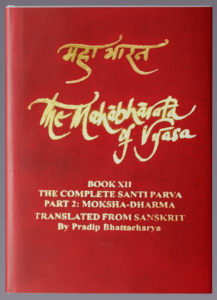
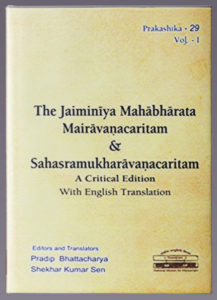
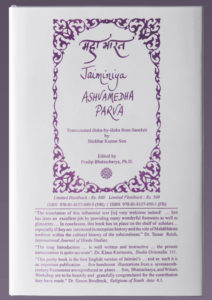
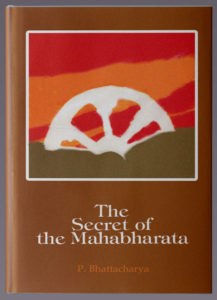
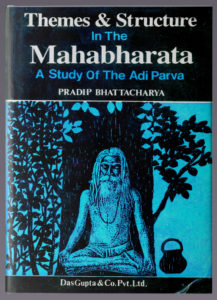
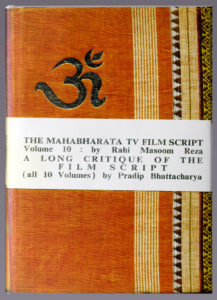
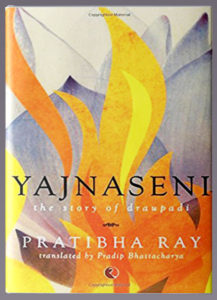
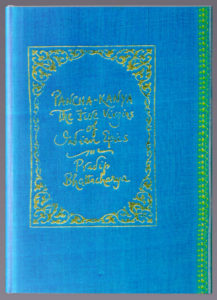
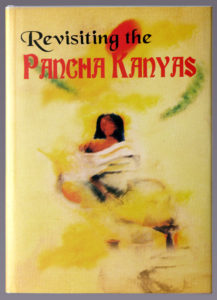
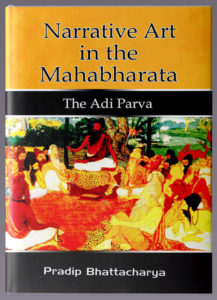
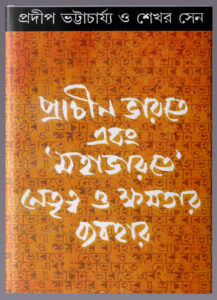
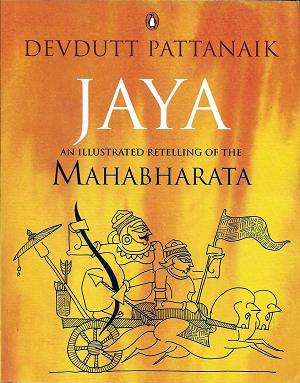 How shall vibrant shoots of the future come forth unless we go to our roots? That is why Janamejaya, king of Hastinapura, requests Vyasa, his ancestor, to tell him about his lineage. Retellings of Indian mythology have been many but for the first time we have a medical doctor ministering to the spirit by evoking archetypal memories through his retellings. Of his work, the most significant is this attempt to re-tell the Mahabharata in a new way.
How shall vibrant shoots of the future come forth unless we go to our roots? That is why Janamejaya, king of Hastinapura, requests Vyasa, his ancestor, to tell him about his lineage. Retellings of Indian mythology have been many but for the first time we have a medical doctor ministering to the spirit by evoking archetypal memories through his retellings. Of his work, the most significant is this attempt to re-tell the Mahabharata in a new way.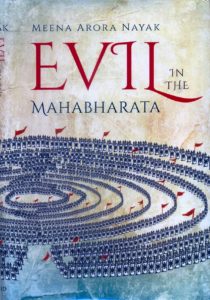 Meena Arora Nayak: Evil in the Mahabharata, Oxford University Press, 2018, pp. 355, Rs. 650/-
Meena Arora Nayak: Evil in the Mahabharata, Oxford University Press, 2018, pp. 355, Rs. 650/-